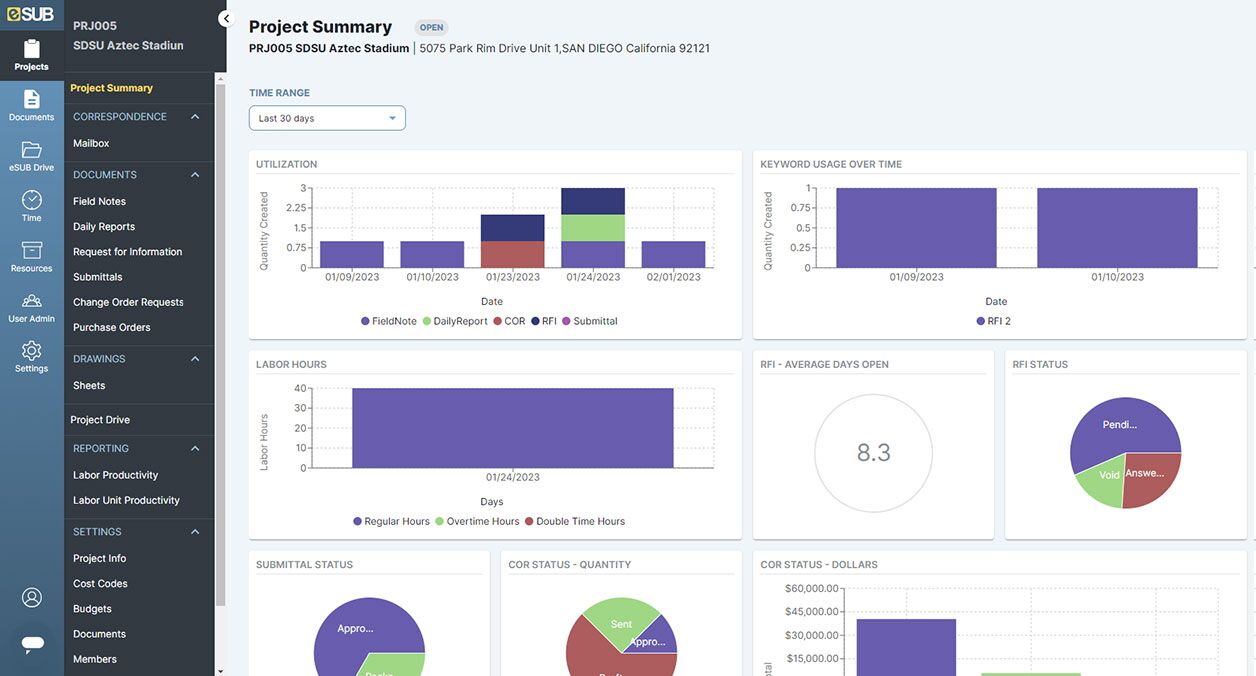Construction Project Management Software: Boost Performance and Cooperation
Tailored Construction Management Software Program: Optimizing Resource Appropriation and Budgeting Methods
These sophisticated tools offer a nuanced method to optimizing resource appropriation and budgeting techniques, essential elements for effective project implementation. By diving right into the complexities of just how such software can improve resource allocation methods and improve spending plan optimization strategies, a clear path toward increased task performance arises.
Advantages of Tailored Software Program Solutions
Tailored software application remedies use a myriad of advantages to building and construction administration companies seeking to boost effectiveness and enhance procedures. One crucial benefit is the modification of functions to line up with the certain needs of the construction sector (construction project management software). By tailoring software options to attend to task monitoring, scheduling, budgeting, and resource allowance, companies can enhance their operations and accomplish better productivity. In addition, tailored software program allows for smooth integration with existing systems, reducing the requirement for manual information access and reducing errors.
One more advantage of tailored software application solutions is the capability to supply real-time understandings and analytics. Building administration firms can leverage data-driven decision-making to keep an eye on task progress, determine bottlenecks, and make adjustments quickly. This aggressive method boosts project outcomes and aids firms remain on track with timelines and budgets.

Improved Resource Allowance Techniques
Implementing reliable source appropriation approaches is crucial for construction management companies to maximize project results and maximize efficiency. Improved resource allotment methods entail strategically appointing personnel, devices, and products to specific tasks to make certain optimal utilization of sources. One crucial facet of enhanced source allowance is the ability to properly forecast job needs and assign resources as necessary. By leveraging building and construction administration software program that offers real-time monitoring and reporting attributes, companies can dynamically adjust allowances as project needs advance, causing enhanced effectiveness and cost-effectiveness.
In addition, improved source allotment methods allow building companies to determine and resolve prospective traffic jams or resource constraints proactively. By conducting normal evaluations of resource usage and performance metrics, managers can make data-driven choices to rearrange resources efficiently and stop hold-ups. This aggressive approach not just boosts task timelines however also lessens the threat of budget overruns due to ineffective resource allowance.
Budget Plan Optimization Methods
To accomplish ideal economic performance in building and construction jobs, effective budget optimization strategies play a critical duty in guaranteeing cost control and task success. One key technique is the establishment of a comprehensive job budget that allocates resources based upon top priority and important needs. By clearly specifying the scope of work, establishing practical price price quotes, and continuously monitoring expenditures, construction supervisors can determine potential cost overruns early and take rehabilitative activities. Furthermore, executing value engineering practices can assist improve project costs without compromising high quality. This includes examining each project component to identify chances for price savings while keeping performance requirements. Leveraging historic data and sector criteria enables building and construction managers to make enlightened decisions regarding budget appropriations and determine areas where costs can be maximized. By integrating these budget optimization methods into building and construction management software application, job stakeholders can improve financial preparation, source allotment, and overall budget management to drive task success and profitability.

Effect On Project Efficiency
Optimizing Get More Info construction monitoring software can substantially enhance project effectiveness by improving interaction, boosting collaboration, and facilitating data-driven decision-making. By streamlining job info, stakeholders can quickly access real-time updates, minimizing hold-ups brought on by miscommunication or outdated information. Enhanced partnership attributes make it possible for group members to interact flawlessly, no matter their physical area, promoting an extra natural and efficient job environment. In addition, construction administration software application can give valuable insights through information analytics, permitting task managers to browse around this site make educated choices promptly and precisely.
Additionally, the automation of regular jobs such as organizing, budget tracking, and source allocation can liberate important time for project groups to concentrate on important activities, ultimately quickening job delivery. The capacity to keep track of task development in real-time and recognize possible bottlenecks enables aggressive analytical, stopping issues from escalating and creating hold-ups. In general, the influence of tailored building and construction monitoring software on task performance is indisputable, using a competitive benefit by optimizing process and maximizing efficiency.
Future Trends in Building Software
As the construction sector remains to develop, improvements in modern technology are forming the future landscape of building and construction software application solutions. One substantial trend imminent is the enhancing assimilation of expert system (AI) and machine knowing capacities in building software application. These innovations have the possible to change how construction jobs are handled by making it possible for anticipating analytics, automated decision-making processes, and enhanced job understandings.
Another future fad in building and construction software is the expanding emphasis on cloud-based services. Cloud modern technology provides boosted adaptability, scalability, and availability for building groups, enabling for real-time cooperation and data sharing across task stakeholders. This shift towards cloud-based software is anticipated to enhance job effectiveness, streamline communication, and boost general task results.
In addition, the surge of Structure Information Modeling (BIM) is anticipated to proceed forming the building and construction software landscape. BIM software promotes 3D modeling, visualization, and data monitoring, causing improved job coordination, lowered mistakes, and boosted job results. Accepting these future fads in building software program will certainly be essential for business looking to remain competitive and drive innovation in the industry.
Verdict
In conclusion, tailored building management software supplies various benefits such as enhanced resource allotment techniques and budget optimization techniques. This software application has a substantial effect on project efficiency by enhancing procedures and boosting overall efficiency (construction mangement software). As technology continues to development, future trends in building and construction software are expected to further maximize resource allotment and budgeting find this strategies for building jobs